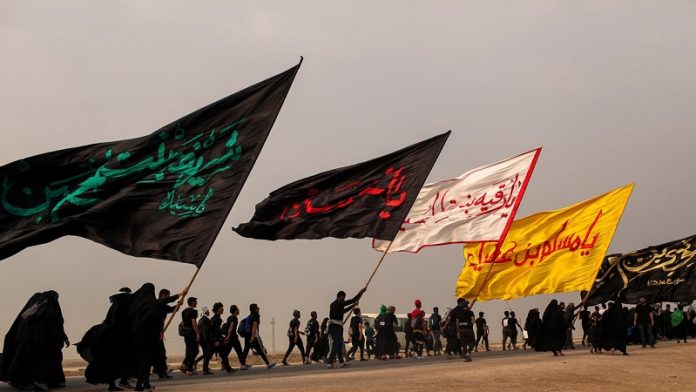Every year on the 20th of Safar, the second month of the Islamic Calendar, the Arbaeen walk is held. In this ritual, millions of people around the world, Muslim or even non-Muslim, gather in Iraq to participate in a symbolic walk.
For months, the generous people of Iraq have been making preparations to welcome the pilgrims of Hussain ibn Ali, the grandson of the Islamic prophet Muhammad.
Without any expectations in return, the people of Iraq consider it a great honor to serve those who attend this great event.
The purest humane manifestations are displayed in this peaceful gathering.
It is very surprising how millions of people can gather in one place, the number reached 21,198,640 in 2022, What is it moves this huge community that people walk this long distance of about 90 kilometers and embrace all hardships, just to visit the shrine of Hussain ibn Ali.
In 2016, some 11.2 million people visited the shrine, 13.8 million in 2017, 15.3 million in 2018, then the number was 15.2 million in 2019, 14.5 million in 2020, 16.3 million in 2021 and it reached 21.1 million in 2022.
The following points will create an acquaintance about the Arbaeen walk, an overwhelmingly powerful display of solidarity, which the mainstream media have ignored:
1. What is Arbaeen and when does it take place?
Arbaeen is 40 in Arabic and it coincides with the 20th day of the Islamic month – Safar, the 40th day after the death of Hussain ibn Ali. He was killed on the 10th day of the first Islamic month – Muharram, which is also known as the Day of Ashura, along with his companions and family in the most cruel and inhuman way possible.
2. Events of Arbaeen in the year 61 AH
After the incident of Karbala, the family of Hussain, including his sister Lady Zainab and his son Sajjad were taken as captives to Syria (Damascus) to the court of Yazid. According to some historical narratives, some members of Hussain’s family went to Karbala and visited his grave after being freed from the captivity of Yazid in Syria. Also, some believe that the severed head of Hussain, which was taken to Damascus by Yazid’s army was returned to Karbala on this day and was buried next to his body.
3. What is the philosophy behind visiting Hussain’s grave?
Muslims remind themselves of these two points when visiting Hussain’s grave:
Never surrender to oppression, as their leader Hussain did not surrender to the tyrants of his time.
Like their master Hussain, they should always make efforts to reform themselves and their society.
Read more: Arbaeen walk, know everything about this million march
4. How long does it take to walk from Najaf to Karbala?
The walking route from Najaf city to Karbala city, which is called the Arbaeen walk, takes about three days and is nearly 90 kilometers. However, in this long and huge walk, everything one needs is provided, and there are no worries about accommodation or food, all these things are provided voluntarily by the Mawkibs that are set up on the way.
5. Who can participate in the Arbaeen walk?
All people of any nationality, religion, and age can join this walk and there are no restrictions.
















